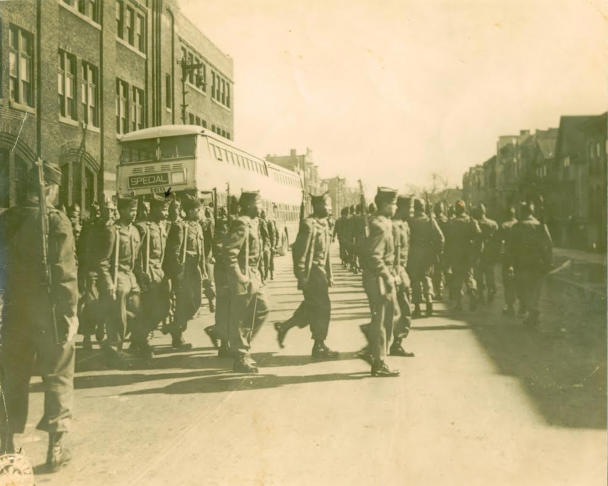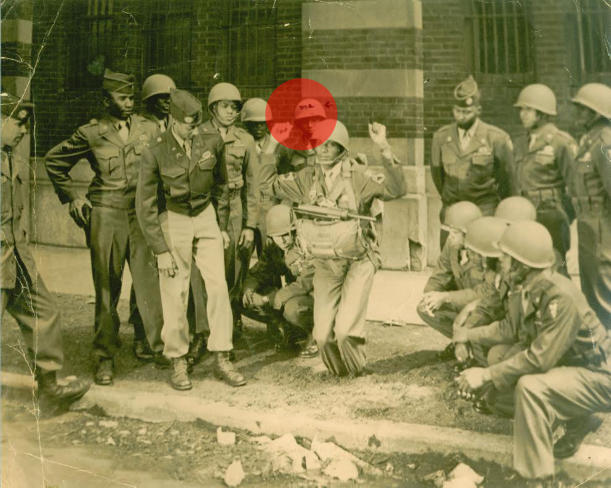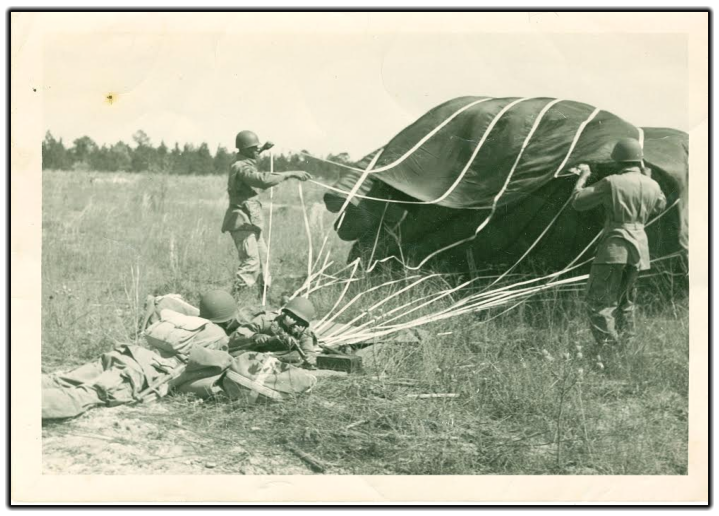By Jeff Wilkinson, thestate.com
It was Aug. 6, 1945, and as fire raged below him, Lonnie Walker, a soft-spoken 23-year-old
U.S. Army paratrooper from rural Louisiana, plunged into the high canopy of trees and jerked
mightily as his parachute snagged on a limb.
Suspended, he tied one end of a 150-foot-long rope to his harness and dropped the rest of the
length to the ground. Slipping out of his harness, he slid down the rope and began fighting the
fire.
One of Walker’s comrades, a medic named Malvin L. Brown, was not so fortunate.
“He didn’t have enough rope to get down from his parachute,” said Walker, now 85, of
Blythewood. “He fell and lost his life.”
Walker was a member of the first African-American paratrooper battalion, the Triple Nickles,
555th Parachute Infantry.
And on today’s 65th anniversary of V-J Day — Victory over Japan Day, Aug. 14, 1945 — the story of Walker and the Triple
Nickles represents one of the least-
known and most-bizarre campaigns
of World War II.
The fire that Walker was fighting
that day was not in the jungles of
the Philippines or on some south
Pacific coral island. Instead, it was
one of many ignited in U.S. and
Canadian forests by Japanese
incendiary bombs attached to
balloons and launched across the
Pacific Ocean.
Since Gen. Jimmy Doolittle led his
B-25 bomber crews — trained, in
part, in Columbia — in their famous
raid over Japan in the spring of
1942, the Japanese had
endeavoured to spring the same
kind of attacks on the United States.
Only a handful were successful.
In February 1942, a Japanese
submarine shelled an oil field on a
beach near Santa Barbara, Calif.,
and damaged a pump house.
In June 1943, another Japanese
submarine shelled a coastal fort in
Oregon, and in September its crew
assembled and launched a small plane that dropped incendiary bombs and started forest fires.
But in the winter of 1944-1945, the Japanese launched more than 9,000 “fire balloons” toward the western coasts of the U.S.
and Canada.
The balloons were swept east at high altitude on the winter jet stream, controlled by an altimeter that discarded ballast or
vented hydrogen from the balloon to maintain altitude.
After three days of flight, the balloons would release their incendiary bombs.
About 300 were spotted in the United States of 1,000 or so that were estimated to have survived the trip.
On May 5, 1945, a pregnant woman and five children on a picnic were killed when they discovered a balloon bomb in
southern Oregon. It exploded as they investigated. They are the only known civilian deaths from the fire balloons and the
only known civilian U.S. World War II casualties in the mainland United States from enemy actions.
The balloons were kept secret by U.S. authorities who were afraid of panicking civilians, even though the deadly devices
were found as far east as Detroit.
For Walker and his comrades, fighting fires on U.S. soil set by the Japanese was a service they had not expected.
Created in December 1943, the “Triple Nickles” — a spelling derived from old English, Walker said — were part of the 92nd
Infantry Division, the “Buffalo Soldiers.”
Walker joined after he was drafted in 1943. It was a time when segregation still ruled the South, which had been wracked by
poverty because of the Great
Depression.
Walker heard stories of plantation
days from his grandfather, Clarence,
an ex-slave. His father, also named
Clarence, although college-educated,
farmed on land owned by someone
else.
“You get half of what you raised,”
Walker said. “The owner of the
plantation, he gets his half. It’s called
share-cropping.”
For Walker, being in the Army was a
liberation, even though training for
the airborne was tough.
“If I had to start all over again, be
called into the service, that’s what I
would be,” he said, referring to a
paratrooper. “I was clothed in a
uniform, which was great. We
dressed different from everyone else,
in shiny boots. I loved it.”
But even in uniform the men of the
555th still had to use segregated
toilets and drinking fountains, sit in
the back of buses and avoid run-ins
with racists, Northern and Southern.
Walker remembers that during one furlough he was required to sit alone on the back seat of a bus with a black curtain pulled
in front of him from Jackson, Miss., to his home in Louisiana.
He served four years then returned home. He rarely spoke of his time in the Army until about 10 years ago.
Then, his daughter and son-in-law, Ana and Byron Jones, wanted to buy him something special for Father’s Day. They
thought a jacket and hat commemorating his service in World War II would be nice, Byron Jones said.
When they asked him what unit he was in, he said the “Triple Nickles.” They looked it up on the Internet and were amazed to
find her father had been a pioneering African-American paratrooper.
“This guy is part of my family, and he’s a living piece of history,” said Byron Jones, an Army veteran who is supervisor of
physical security for Fort Jackson. “It gives you a sense of pride.”
Walker said that despite the racism his unit had to endure, he is happy that it, like the Buffalo Soldiers and the Tuskegee
Airmen, was able to blaze a trail for other African-Americans.
“Things have improved,” he said. “It makes me feel good that some of my work is not in vain.”




Pioneering African-American paratrooper fought WWII
Japanese bombs on the home soil





